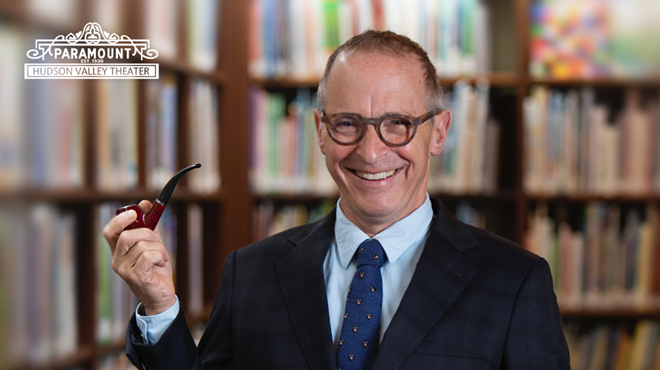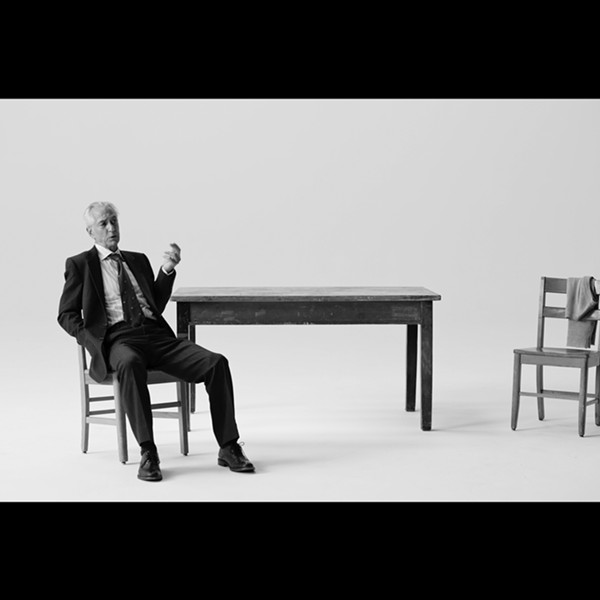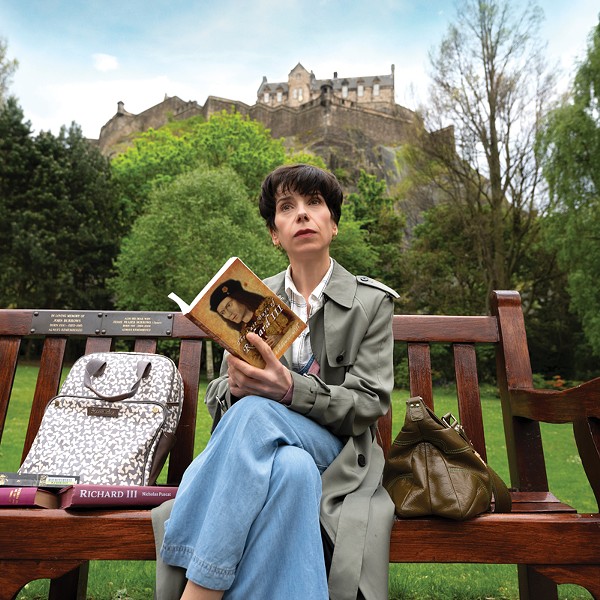I’m not a great driver. I haven’t driven defensively since the day I took my road test. I don’t check my blind spot when I change lanes. Rolling through stop signs is a signature move of mine. I’ve had many near crashes trying to untangle and plug in the hands-free device for my phone. I’m not sure what correct mirror placement would look like. I text, I drink, I eat, I fiddle with the stereo—sometimes all at once. I hopscotch lanes madly to shave seconds off my 12-minute commute. If I see a group of schoolchildren on a corner and a bus approaching, I speed up and try to pass before the blinking lights come on. I’m test marketing a bumper sticker that reads: “Safety Is Not My Goal—Not By A Long Shot.”
A few years ago, I tore my rotator cuff—that muscle group in the shoulder that allows the splendid range of motion we have in our arms—reaching for a water bottle that had rolled behind the driver’s seat into the rear passenger foot well. Instead of just pulling over, I kept one hand on the wheel and pretended I was Plastic Man with the other. (And there are some other probably downright dangerous stunts I’ve pulled in cars, which, for legal reasons and the viability of my future political career, I am not at liberty to disclose.)
The thing of it is, I know I’m a menace, but only a casual, everyday one. I haven’t been in an actual accident since a fluky all-the-traffic-goes-from-65mph-to-a-dead-stop incident on the Bruckner Expressway 10 years ago. I’m no different from anyone else. We all engage in these mildly antisocial behaviors (the torn rotator cuff probably excepted) when we’re cocooned in our metal-and-plastic composite carapaces. We know it might be just a matter of time before we send one text too many, before we sideswipe a cyclist in our distracted state, before we miss the little red ball as it comes bouncing out from between parked cars… We all know, in our automotive heart of hearts, we’re not safe drivers.
Or so I thought.
Ford recently hired a company to conduct a study on our driving habits. When asked whether they would describe themselves as safe drivers, 99 percent responded affirmatively. The majority of the same group of 2,500 respondents then admitted to such automotive behaviors as talking on the phone, eating, and driving over the speed limit. These people also said that they were concerned that the driving habits of others were making the roads less safe. Luckily, Ford is incorporating this information into designs for its 2013 Fusion, which will have safety systems that enable technology to forestall human idiocy. I, for one, welcome our new robot overlords (While You Were Sleeping).
One instance in which technology may sometimes be overly relied upon is in the birthing process. Hospitals are necessary places, but not all children need to be born there. If you’ve ever tried to get discharged from a hospital and had to wait around for hours while your doctor is rounded up to sign some form, you know that hospitals—for good reason—are bureaucracies run on rules and regulations. This structural rigidity might not create the most relaxing setting for a transcendent birthing experience. And while home birthing isn’t for a lot of us, many in the region are choosing to have kids at home. Wendy Kagan, our health and wellness editor, talks with parents, doulas, and midwives about the philosophy and practicality of delivering at home in “Home Birth Revolution." Home births are on the rise again after a contraction following the aging out of the hippie generation. Though they constitute less than one percent of all births in the US, home births rose 24 percent between 2004 and 2009. And while I have no statistics on how the Hudson Valley fares against the rest of the US in home birth rates, I’m sure we’re at the crowning edge. Mary Riley, the dean of local doulas, has witnessed over 500 home births.
Since its birth in 2000, the Woodstock Film Festival has matured from a runt of a backwater regional film festival into a serious player on the national film festival circuit. (Mad props to Festival Director Meira Blaustein, cofounder Laurent Rejto, and all who’ve labored so productively on this project over the years.) As we’ve done each year since its inception, in this issue we again publish our near-exhaustive guide to the festival, penned by our indefatigable film writer Jay “Sitting in the Dark is My Indian Name” Blotcher, who previewed 36 films and spoke with a handful of directors and actors to help shape your festival-going experience ("How a Local Film Festival Could Save the World").
The Woodstock Film Festival isn’t the only cinematic game in town, however. Just a couple days after WFF hands out its Maverick awards, the Film Columbia Festival begins its three-day run in Chatham. Now in its thirteenth year, the festival has a record number of filmmakers on hand to discuss their work this year, including Alex Gibney (Client 9), who will be screening his Catholic Church pederasty documentary Mea Maxima Culpa: Silence in the House of God. Natalie Axton previews the Film Columbia Festival.
If film fests ain’t your bag, there’s plenty more to do this month, from the music and art of the O+ Festival ("The Art of Health”), to the weekend-long celebration of Joseph Campbell and his legacy at the Center for Symbolic Studies (“Mythically Speaking”). And let’s not forget the 500 other events listed in The Forecast. There’s so much to rush out and do! Well, with all those distracted drivers we keep hearing about, you may not want to rush. You may want to wait for a fancy new Ford Fusion.
- Home
- Arts
- Food & Drink
- Towns
- Home & Design
-
Towns
- Accord
- Amenia
- Beacon
- The Berkshires
- Catskill
- Chatham
- Cold Spring
- Cornwall
- Ellenville
- Gardiner
- Garrison
- Germantown
- Goshen
- Great Barrington
- Hunter
- High Falls
- Highland
- Hillsdale
- Hopewell Junction
- Hudson
- Hyde Park
- Kerhonkson
- Kinderhook
- Kingston
- Marlboro
- Middletown
- Millbrook
- Millerton
- Montgomery
- Mount Tremper
- New Paltz
- New Windsor
- Newburgh
- Orange County
- Pawling
- Peekskill
- Phoenicia
- Poughkeepsie
- Putnam County
- Red Hook
- Rhinebeck
- Rosendale
- Saugerties
- Stone Ridge
- Sugar Loaf
- Tivoli
- Wappingers Falls
- Warwick
- Woodstock
- Westchester
- Lifestyle
- Horoscopes
- Cannabis
- Wellness
- The River
- Events
- Chronogrammies
- Newsletters
- Add Your Event
- Support Us
- Login
- sign in
- Username
About The Author
Brian K. Mahoney
Brian is the editorial director for the Chronogram Media family of publications. He lives in Kingston with his partner Lee Anne and the rapscallion mutt Clancy.
Support Chronogram
Related Content
Website
Chronogram


















